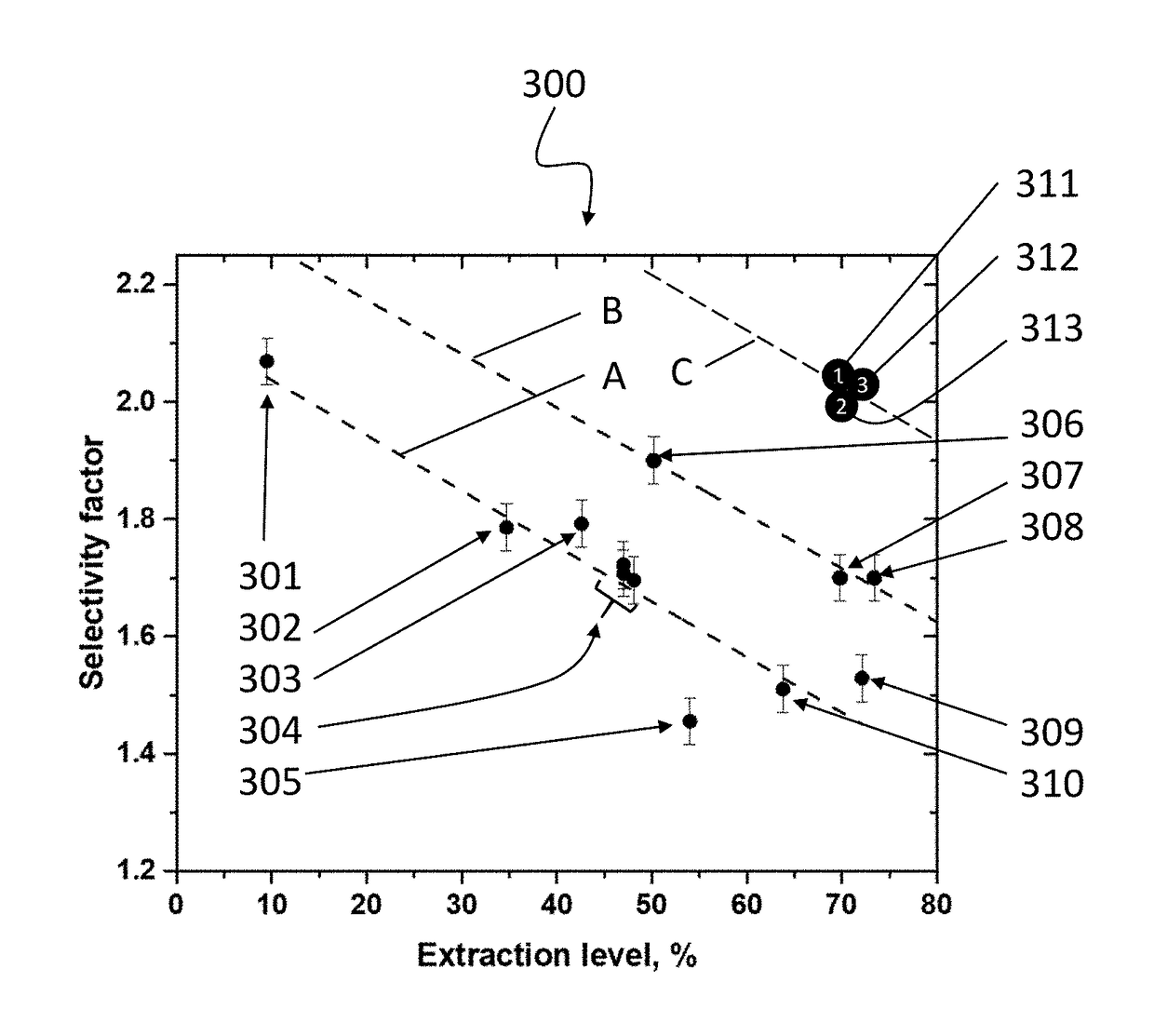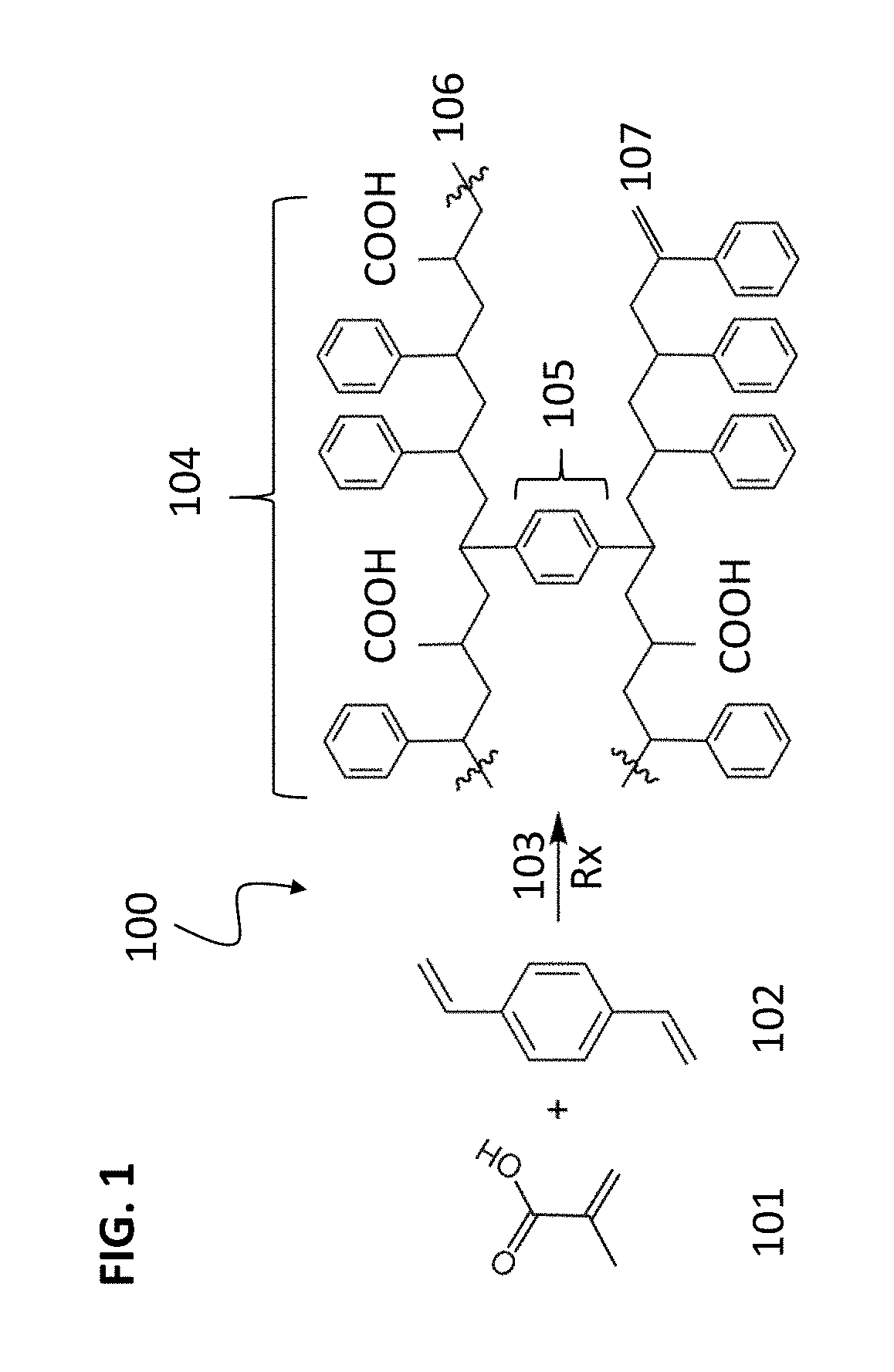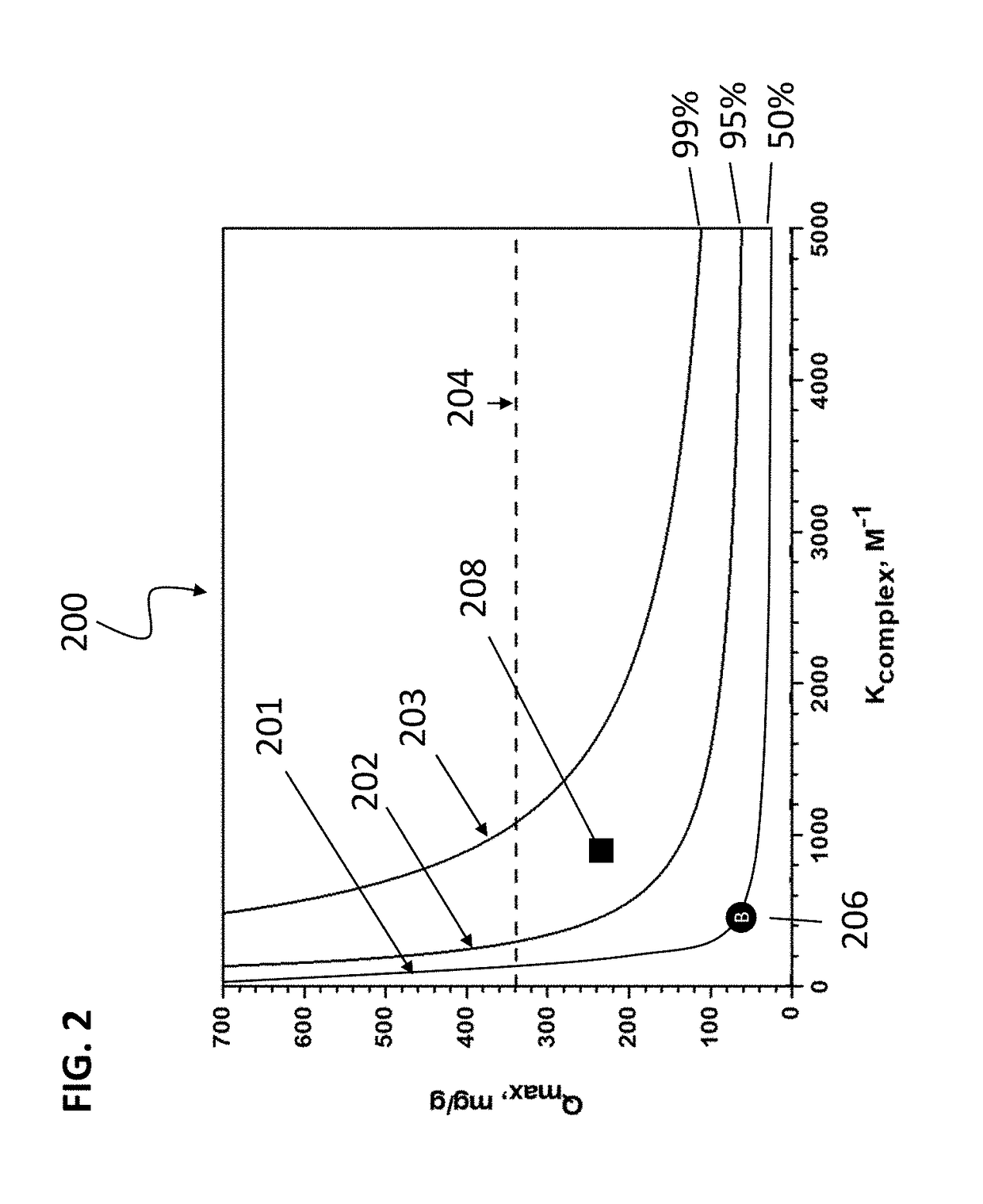Programmable polymer caffeine extraction
a technology of caffeine extraction and polymer, which is applied in the direction of coffee alkaloid content reduction, other chemical processes, separation processes, etc., can solve the problems of requiring industrial machinery, affecting the perceived appearance, odor and taste of the coffee beverage, and all the mips disclosed to date all suffer from one or more deficiencies, etc., to achieve rapid absorption kinetics, increase binding capacity, and increase material selectivity
- Summary
- Abstract
- Description
- Claims
- Application Information
AI Technical Summary
Benefits of technology
Problems solved by technology
Method used
Image
Examples
first embodiment
[0124]FIG. 6 shows several embodiments of a mechanical single-use wand-style decaffeination device 600 employing one or more inventive MIP matrices as disclosed herein. In the first embodiment, a lollipop-style wand 601 features a handle means 603 attached by means of a junction 604 to an upper region of an outer housing 606 of the decaffeination pod 612 that holds one or more containment housing 608 means that contain a plurality of MIP beads 610 or alternatively MIP matrix material in the form of a powder.
second embodiment
[0125]In the second embodiment, a cylinder-style wand 602 features a handle means 603 attached by means of a junction 604 to an upper region of an outer housing 606 of the decaffeination pod 614 that holds one or more containment housing 608 means that contain a plurality of MIP beads 610 or alternatively MIP matrix material in the form of a powder.
third embodiment
[0126]In a third embodiment, a cylinder-style wand 605 that is composed of a unitary block of the inventive MIP matrix materials formed into a micro-foamed polymer sponge 616 is featured, with an attachment means or junction 604 serving to connect the sponge 616 portion to a lower end of the handle means 603. For this embodiment 605, as well as for embodiments 601 and 602, the relative lengths of the respective lower functional portions of the inventive device 612, 614 and 616, have lengths that are preferably at least twice as long as their respective widths, so that they can be submerged into a liquid and have their entire lengths under the surface of the liquid in a typical volumetric configuration as presented by a mug of coffee or cup of tea or a glass of caffeinated beverage such as a soda, while the upper portion of the respective handles 601 remain above the surface of the particular liquid beverage being treated, allowing the stirring and manipulation of the inventive devic...
PUM
| Property | Measurement | Unit |
|---|---|---|
| volume | aaaaa | aaaaa |
| volume | aaaaa | aaaaa |
| molar ratio | aaaaa | aaaaa |
Abstract
Description
Claims
Application Information
 Login to View More
Login to View More - R&D
- Intellectual Property
- Life Sciences
- Materials
- Tech Scout
- Unparalleled Data Quality
- Higher Quality Content
- 60% Fewer Hallucinations
Browse by: Latest US Patents, China's latest patents, Technical Efficacy Thesaurus, Application Domain, Technology Topic, Popular Technical Reports.
© 2025 PatSnap. All rights reserved.Legal|Privacy policy|Modern Slavery Act Transparency Statement|Sitemap|About US| Contact US: help@patsnap.com



